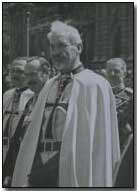Battles - The Third Battle of the Isonzo, 1915
 Initiated
some two-and-a-half months following the
Second Battle of the
Isonzo, the third battle was initiated on 18 October 1915 and, like the
two earlier battles, lasted around two weeks before once again being called
off in failure by Italian Chief of Staff
Luigi
Cadorna.
Initiated
some two-and-a-half months following the
Second Battle of the
Isonzo, the third battle was initiated on 18 October 1915 and, like the
two earlier battles, lasted around two weeks before once again being called
off in failure by Italian Chief of Staff
Luigi
Cadorna.
For a single-article background to the Isonzo battles click here.
Having conducted the earlier two attacks along the Isonzo chiefly through the medium of massed frontal infantry attacks ill-supported by artillery, Cadorna was gradually coming round to the view - earlier understood on the Western Front - that artillery played a vital role as a precursor to and in support of infantry advances.
Thus by the time the third battle was underway in worsening weather conditions Cadorna had drafted some 1,200 artillery pieces into action. The main target of this attack was to be Gorizia; clearly the Italians were seeking a major breakthrough but continued with a flawed policy of spreading the force of their attack too thinly throughout the Isonzo line.
For example, aside from the main attack upon Gorizia Cadorna ordered attacks upon secure Austro-Hungarian bridgeheads at Plezzo and Tolmino. Additional offensives were launched at Plava and on the Carso at St. Michele, as well as at nearby Mte Sei Busi (the scene of at least four closely fought attacks).
The result was nevertheless the same - a costly repulse and complete failure, with the Austro-Hungarians in command of the high ground (literally: they controlled the mountains beyond the river) watching the Italians prepare their attack and making defensive plans accordingly.
As at the earlier two battles the Austro-Hungarians were commanded by Svetozar Boroevic von Bojna (unflatteringly nicknamed the 'Croatian Thickhead' by his unappreciative troops). Boroevic may not have been among the greatest strategical commanders - although he was certainly one of Austria-Hungary's more capable wartime field commanders - but he was capable of conducting a competent defence given such advantages as control of the mountains around the Isonzo.
Boosted by an influx of manpower from the Eastern and Balkan fronts Boroevic's record when initiating offensive operations was, however, rather less impressive. During the Third Isonzo battle he launched fierce counter-attacks at Ste Michele, at a high cost in casualties.
Nevertheless Boroevic's primary brief was to maintain a defensive posture; and in this the Austro-Hungarians were admirably succeeding despite a gradual wearing down of forces on both sides.
Cadorna waited exactly one week before initiating the Fourth Battle of the Isonzo on 10 November 1915, often considered an extension of the Third Battle.
Click here to view a map charting the progress of the first eleven battles of the Isonzo.
Photograph courtesy of Photos of the Great War website
A "creeping barrage" is an artillery bombardment in which a 'curtain' of artillery fire moves toward the enemy ahead of the advancing troops and at the same speed as the troops.
- Did you know?
